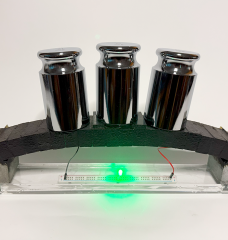
Today Antora Energy, a California-based thermal-battery startup, unveiled its plan to build its first large-scale manufacturing facility in San Jose. The announcement is a big step forward for thermal batteries (also known as heat batteries), an industry seeking to become a major player in the energy storage sector.
Antora's batteries store renewable energy as heat, which can then be used to manufacture industrial products like cement or glass. Producing industrial heat accounts for about 20% of all global energy demand, in part because this process relies heavily on fossil fuels to generate the high temperatures needed to make products. Antora hopes its heat batteries, which are modular and can scale up as needed, will help wean heavy industries off fossil fuels and reduce their carbon footprint.






